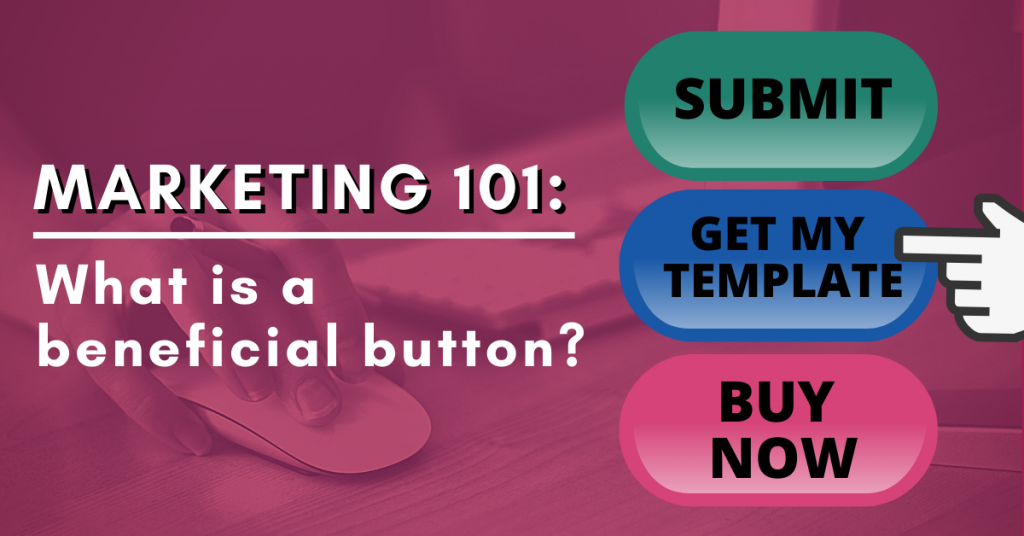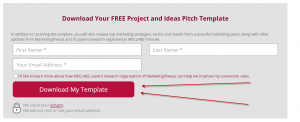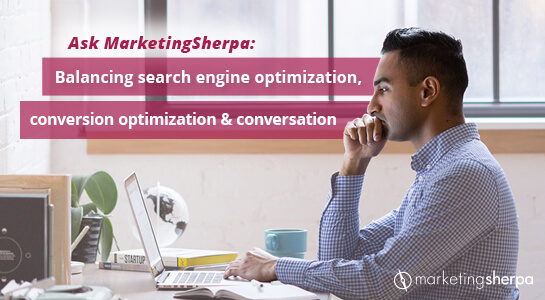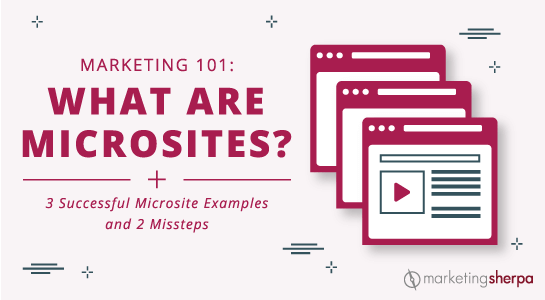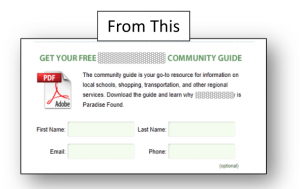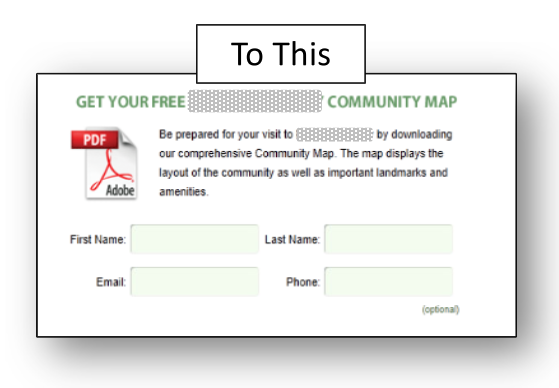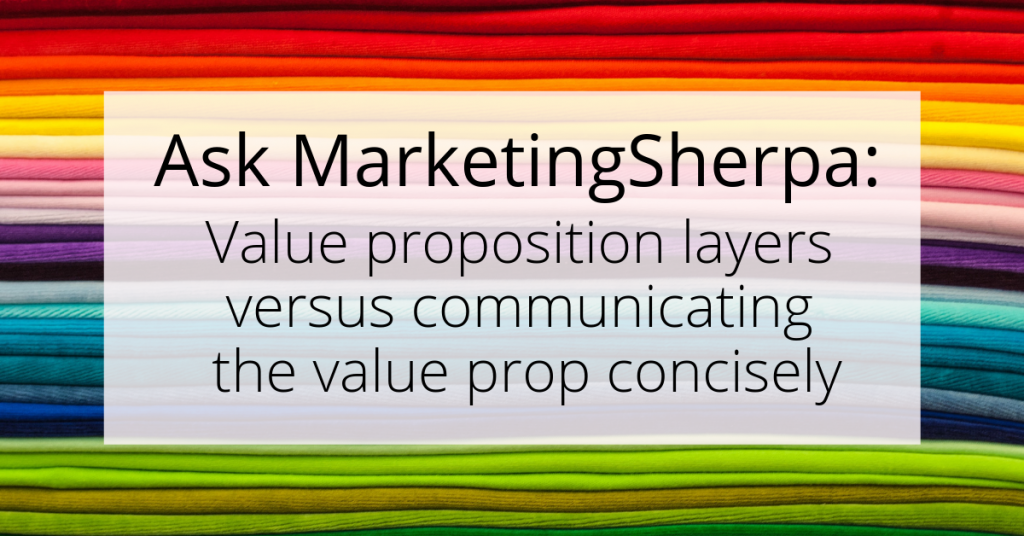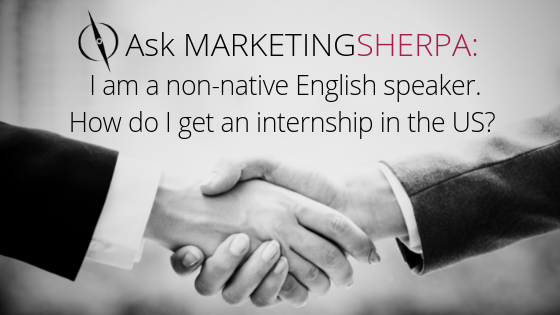Exploring Value Proposition and AI Technology: How to create unique ideas that you can execute with artificial intelligence
In this blog post, I answer questions cohort members put in the chat of recent MEC200 and MEC300 LiveClasses for ChatGPT, CRO and AI: 40 Days to build a MECLABS SuperFunnel (feel free to register at that link to join us for an upcoming MECLABS LiveClass).
Maybe this can be answered in an email later? I am curious—in an industry like insurance where the commission structures are regulated, all agents are essentially selling the same products so exclusivity is very low, I wonder if there are any insights in how to differentiate an agent and provide exceptional value to drive customers.
You have put your finger on the essential value proposition challenge. I know it feels like this is uniquely an insurance problem, but many industries face this same challenge.
Every car can get me from point A to point B, yet Tesla has a unique value proposition. I could create this blog post on any computer, yet Apple has a unique value proposition. Every health care provider has to comply with government regulations and mandates from third-party payers in the insurance industry, yet Mayo Clinic has a unique value proposition.
All that said, I do agree, the situation you explained is harder than most. So to get your creative juices flowing, here are a few ideas for differentiating an insurance agent:
- Knowledge of the local market, or a niche in the local market – For example, I live in Jacksonville. It is a significantly lower risk area of Florida (for hurricanes) than almost all of the rest of Florida. But national insurance companies don’t treat it that way. If an agent specialized in low-risk areas of Florida, that might draw my attention.
- Specific demographics – My daughter is a college student, and I pay her auto insurance. If an agent specialized in auto insurance for adult dependents, that might stick out to me.
- Concierge service – This has started to take off in medicine, where people are sick of waiting for primary care doctors. If an agent provided proactive review of my policy every year, and its office was available 24/7 to file a claim on my behalf, that my catch my attention.
- The fiduciary agent – This is taking off in the financial planning space, where customers are increasingly skeptical of financial advisors that make commissions. How can they ensure these planners are putting their own interests first, and not just going with the biggest commission? Enter fee-only financial planners who put the customer first.
- Quality play – What if the agent didn’t write insurance from every possible company, but only companies recommended by Consumer Reports?
- Additional services – What other insurance adjacent services could they provide? Manage home renovation projects? Manage auto maintenance? All-in-one funeral services including wills and making sure burial wishes are respected for life insurance clients?
Now, you understand your industry better than I do. Some of these ideas might not be practical, or even feasible at all. But using lateral thinking, maybe they’ll spark a new idea in you. If you’re not familiar with the practice, Edward de Bono explains it as, “Lateral thinking…is the process of using information to bring about creativity and insight restructuring.”
And if you really want to get your creative juices flowing, read about Trōv’s disruptive idea to use micro-duration policies in this article – Mobile Marketing and Value Decoupling: Interview with Harvard professor about eight years of research into business disruption.
The company ultimately pivoted from B2C to B2B, so the model described in this article didn’t work out, but that is often the case for early adopters. And the company’s creativity may give you an idea for creating differentiated that you ultimately perfect with your insurance clients.
Also, may the marketing professional become a business consultant in helping an agent to create new value for their business offerings in order to create more value for their customers? Thank you!
Exactly. You’re hitting the nail on the head for why mastering a value proposition methodology can be so crucial.
I’ve had the opportunity to interview many marketing leaders for the How I Made It In Marketing podcast. And these successful leaders do not stay siloed in the marketing department, they don’t only focus on media buys and SEO tactics and automation settings.
Time and time again I’ve heard them tell me how they use the understanding of the customer, along with their marketing acumen, to help the business better serve the customer.
For example…
“…and your business will go out of business, or your client’s business in the case where we were, if you don’t really understand – what does a customer need, why will they choose you, and what can you do to be different from the competition…” This quote is from Radhika Duggal, Chief Marketing Officer, Super, is was a lesson she shared from a mentor in Consumer Financial Services Marketing: Your customer is your most important stakeholder (podcast episode #39).
While consumer financial services isn’t exactly insurance, it has a lot of similarities, and that episode might give you some ideas as well.
What is margin ratio?
It compares the margin of a company to its revenue. A 10% ratio means that 10 cents of every dollar of revenue is over and above the costs of producing the product. There are different ways to calculate this metric – for example, you could calculate gross profit margin, operating profit margin, or net profit margin. But I’ll leave that to an accounting publication to explain.
The reason that I included this question from the chat in here, is because margin ratio is a golden metric to tell you how effective your value proposition is.
Anyone can sell a bunch of products. Just throw enough media buys at it, enough incentives, enough discounting. In fact, the margin ratio can even be negative. You’ll still be selling products, you’ll just be losing money doing it.
A sustainably successful business with a forceful value proposition has a high margin ratio.
Let’s take Apple again, as an example. An Apple device isn’t simply priced a little more than its component parts. It is priced way higher. Because it has a strong value proposition, and therefore pricing power in the marketplace.
On the flip side, a commodity computing device can only eke out a small margin over and above the price of its parts, because there are many similar offerings in the marketplace with no clear differentiation.
Incidentally enough, this is another important reason for marketers to get involved in business and product decisions. A short-sighted business leader could choose to keep making the product just a little worse to save money – thus helping short-term margins but ultimately hurting the company’s value proposition. I discuss that challenge in How Companies Fail, and Why the Customer Always Wins in the End.
Is it fair to say that you only want to test one hypothesis at a time, whether it has one or 1,000 elements doesn’t matter, provided they all contribute to the same hypothesis?
With this question, let’s move on to how to discover the most effective value proposition – marketing experimentation.
First, some quick background. You would start with a framework to assess an existing or new value proposition. From going through this exercise, your team may have multiple questions. For example, which feature is most appealing? Which expression of that feature is most effective? For each of these, you would create a hypothesis.
Now to answer the question – each test should have a single hypothesis. You can change multiple elements on the landing page or ad IF (and only if) they all help you test the same hypothesis.
So if you were testing whether Feature A or Feature B was most appealing on a landing page, you could have a headline and CTA focused on Feature A, and a headline and CTA focused on Feature B. However, you could not have a headline focused on Feature A and a blue CTA button, and then a headline focused on Feature B and an orange button. This is introducing an extraneous variable that would make it harder to interpret the test. Did Treatment #1 win because of the headline about Feature A, or because of the button color?
Incidentally enough, you could have multiple treatments you are testing in the same experiment under the same hypothesis. So you could have four landing pages you test at the same time – one focused on Feature A, and others focused on Feature B, Feature C, and Feature D. However, you must make sure you have a large enough sample size that your results reach statistical validity.
I like this hypothesis but not sure if you should test both an offer and an audience in the same test?
A good hypothesis will help you home in on a key question you are trying to answer about your customer. This is important because you want to be able to clearly understand the results. If the control wins, it means X. If the treatment wins, it means Y.
So putting multiple unrelated variables into a single hypothesis is not a good idea because it will make it harder for you to interpret your test results.
That said, remember, no hypothesis exists in a vacuum. You should run a series of experiments powered by hypotheses that inform each other. So you’re on to something here.
For example, if you discover that, let’s say, Offer A gets a higher conversion rate than Offer B, it may be because Offer A is more powerful for all of your customers.
Or it may mean that you have more than one type of customer set, and there are more that would act on Offer A in that customer set, but Offer B still has large enough group of customer that find it more appealing to represent a profitable segment.
Looking at secondary KPIs can help you discover these groupings. Maybe a certain age group or geographic grouping or device type was more likely to go with Offer B…even though Offer A clearly got more conversions overall.
Again, this is an opportunity to do follow-up testing – focused follow-up testing – to help you answer the new questions that the previous experiment brought up.
I discuss learning the motivations of different customer segments, along with other marketing experimentation topics, in Marketing Experiment: Learn from our split testing mistakes.
Wow! My son is a computer science major. Waste of time?
This question was in response to some artificial intelligence capabilities we previewed in the LiveClass.
I included this question because I’m sure many marketers have the same question.
I don’t have any better crystal ball than you do, of course, but I’m happy to share my hunch – the tools always change, but the task remains the same.
Our task as marketers has always been to help a customer perceive the value of the products and services a company offers. If that is your focus, I believe you will always have a career. The tools will always need that human intervention, that human guidance, that human collaboration. The tools will always need the human to set the direction, even if the tool is actually sailing the ship.
Now, if your role as a marketer has simply been to try to fool algorithms or batch and blast emails to purchased lists…well, the AI may be able to replace you.
I’ll give you an example. I interviewed Melissa-Ann Chan, Head of Marketing, Arta Finance, in Fintech Marketing: Creativity and technology is a killer combo (podcast episode #50). Artificial intelligence and machine learning are key to Arta Finance’s offering focused on the future of personal finance.
But even listening to Chan talk about it, that is only part of the company’s go-to-market strategy. She described how collaboration was key. The ex-Googlers built the company with three core groups of people with different expertise:
- consumer product and growth expertise
- experience running quant hedge funds deep, private equity, and options trading
- AI and ML researchers
Yes AI plays an important role, but without the people who know how to build products and grow brands (marketers), and the people who know how to make the things you’re selling (subject matter experts), my experience tells me that AI on its own will just be creating another commodity. A bunch of AIs spinning out undifferentiated marketing and products, competing on speed to market, losing market share quickly, trying to find ephemeral advantages in markets for traffic arbitrage, and ultimately, burning through capital.
I’m sure there are companies that will survive on those technical abilities, just like there are marketers today who can find momentary advantages in ad buying and algorithm changes and combine that with drop shipping or affiliate networks to turn a profit in an ever-changing world.
But that is an impossible way to build a sustainable competitive advantage. And a roller coaster of a career.
So the marketer’s role comes right back around to the topic we discussed in the beginning of this article – building powerful, unique value propositions to win high-margin business by serving a customer with differentiated value.
How does this not become plagiarism?
This is the dirty little secret of artificial intelligence – it’s not too different from humans in that it is only as smart as its training.
For example, a few years ago, AI would flag up any picture with a ruler in it as skin cancer. “We noted that the algorithm appeared more likely to interpret images with rulers as malignant. Why? In our dataset, images with rulers were more likely to be malignant; thus the algorithm inadvertently ‘learned’ that rulers are malignant. These biases in AI models are inherent unless specific attention is paid to address inputs with variability,” Akhila Narla, Brett Kuprel, Kavita Sarin, Roberto Novoa, and Justin Ko explained in Automated Classification of Skin Lesions: From Pixels to Practice from the Journal of Investigative Dermatology.
And to the questioner’s point, the current crop of generative AI tools that is getting so much press lately doesn’t inherently have knowledge. It is getting trained on the content others have created.
“We have valuable content that’s being used constantly to generate revenue for others off the backs of investments that we make, that requires real human work, and that has to be compensated,” Danielle Coffey, executive vice president and general counsel, News Media Alliance, said in The Wall Street Journal article Publishers Seek Pay For Help With AI by Keach Hagey, Alexandra Bruell, Tom Dotan, and Miles Kruppa.
Which brings us back to the need for marketers in an AI-driven world, and what we can learn from them. Artificial intelligence can copy better than you. So to truly succeed in your marketing career, don’t copy. Use your unique experience, honed skillsets, and a repeatable methodology to create truly original ideas.
Not an easy task I know, but to help you create those original ideas that you can use AI to help you execute, we meet every Wednesday for the ChatGPT, CRO and AI: 40 Days to build a MECLABS SuperFunnel LiveClass, as part of the MECLABS SuperFunnel Research Cohort (and you are welcome to join us, just RSVP at that link).
Here’s how Toby Wilson described the Cohort –”All of that cross-pollination of skill sets and ideas and everything like that creates a synergy that ends up being more than what any individual could bring…” (hear Toby for yourself in this 59-second video).
And here is a quick 56-second excerpt from a recent LiveClass to give you an idea of what you can learn by attending.




